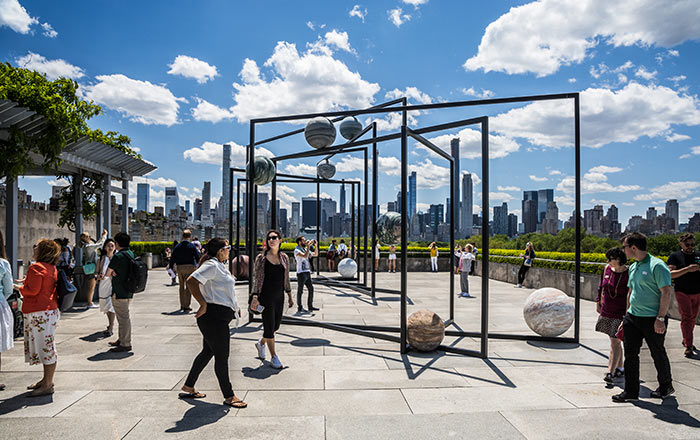Philip Pearlstein
Alex Katz American
Not on view
A year after Alex Katz donated Philip Pearlstein's portrait of Katz (1978.282) to The Met, the museum purchased Katz's portrait of Pearlstein. The two make a dramatic contrast. Besides a greater degree of abstraction, Katz’s portrait is rendered on a shaped piece of aluminum that the artist cut from a larger sheet. In 1959, Katz pioneered a new genre of painting called the cutout. For centuries, paintings were primarily made on square or rectangular supports that mimicked the effect of a window. Cutouts, on the other hand, are cropped so that their edges conform to the contours of the subject. Counterintuitively, Katz depicts the front of Pearlstein on both sides of the aluminum. All face and no back, his portrait is flat like a painting but occupies space like a sculpture. Its composition encourages us to not only walk around it, but also to interact with it as if it were an actual human figure.
This image cannot be enlarged, viewed at full screen, or downloaded.
This artwork is meant to be viewed from right to left. Scroll left to view more.




